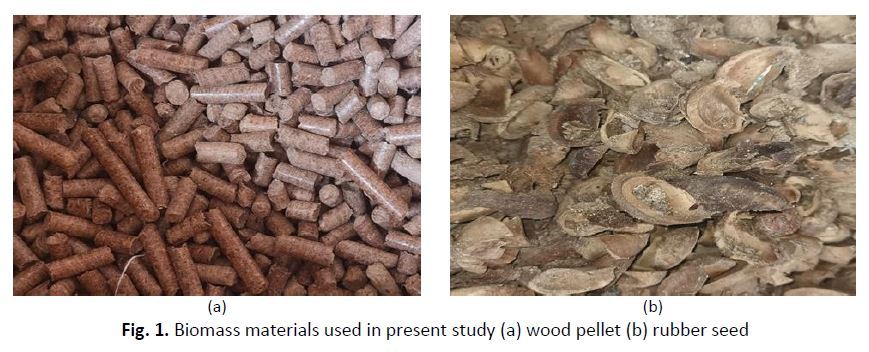Estimation of Higher Heating Value of Biomass from Proximate and Ultimate Analysis: A Novel Approach
DOI:
https://doi.org/10.37934/arfmts.94.2.99109Keywords:
Higher heating value, wood pellet, rubber seed, proximate analysis, ultimate analysis, prediction, gasificationAbstract
Biomass is the organic matter formed by photosynthesis that occurs on the earth’s surface. They contain all forms of waste compost, including urban solid waste, municipal bio solids, animal wastes, forestry and agricultural wastes, and some industrial wastes. Efficient use of biomass oil would aid in the resolution of issues caused by fossil fuels. However, the biggest issue about using this energy is due to the gas composition of biomass material. As a result, properties of biomass are the critical parameter for assessing the fuel content of a special biomass substance in energetic applications. Gasification is the most mature thermo-chemical conversion technique available among the various methods of transforming biomass materials to bio resources. In this context, proximate and ultimate analysis has been used to classify two groups of biomass material that carry out in this experiment. The proximate analysis results have been obtained by the TGA technique while the ultimate analysis results will obtain by the GC mechanism. Then, based on the proximate analysis data various empirical equations containing linear and nonlinear terms were evaluated in order to predict the higher heating values (HHV) of the entire sample range. Since, the biomasses used in this analysis have different properties and fuel characteristics, the estimated HHV for the wood pellet sample are between 15.33 and 19.71 MJ/kg, while the rubber seed sample is between 15.18 and 18.64 MJ/kg. According to the experimental findings, the HHV of wood pellet is at around 2.95 MJ/Nm3 while the HHV of rubber seed of about 4.99MJ/Nm3. The comparison on the theoretical analysis have been show 0.19% compared to the results on wood pellet while the rubber seed have at around 2.07% difference compare each other. The experimental results on wood pellets, the findings reveal a 15.35% difference, while rubber seed indicates a 13.81% difference. Nonetheless, the finding and analysis on the properties, the results can be considered within reasonable limits.
Downloads

































